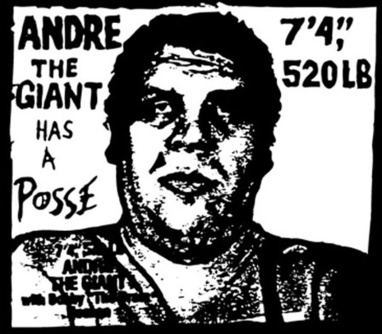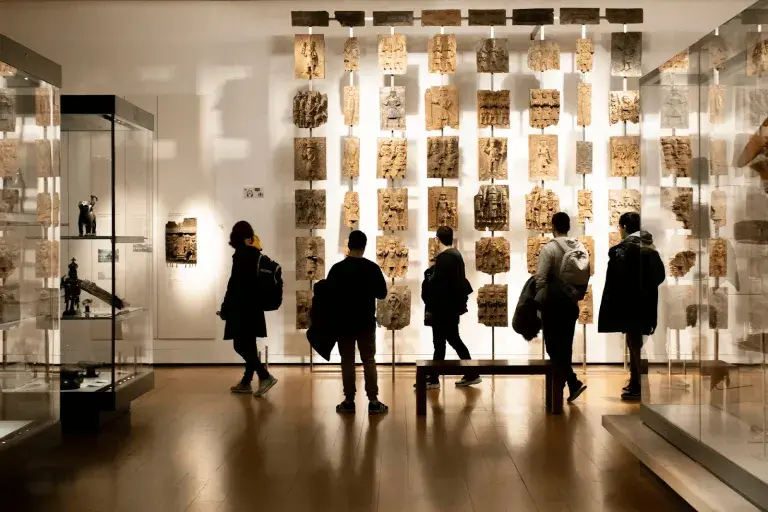The Political and Social Art of Shepard Fairey
Shepard Fairey art, be it posters, murals, stickers or clothing items, is sought-after by collectors worldwide. Shepard Fairey is an American muralist and graphic artist. He is best known for creating a sticker with a portrait of professional wrestler Andre the Giant with the word Obey. His 2008 ‘Hope’ poster portraying U.S. presidential candidate Barack Obama garnered global attention. Fairey street art continues to evolve and adorns the walls of cities including New York, London, Berlin, and Tokyo.

This March, Verisart and SuperRare will present a new piece of Shepard Fairey art. Titled Obey Ideal Power, the artwork is the digital version of Fairey’s 2018 Damaged Wrong Path Mural. It was part of a large mural of 12 canvas paintings, featured in his show titled ‘Damaged.’ Bidding will begin on March 29, 2021, at 1:00 PM EDT and close on April 1 at the same time. Auction Daily provides insight into Fairey’s artistic journey. Read on.

Shepard Fairey Art – Make Art, Not War
Fairey’s popularity skyrocketed in the 1990s when he created his ‘Obey’ sticker campaign inspired by the movie ‘They Live.’ The original sticker featured André the Giant’s image along with the slogan Obey The Giant. Gradually, it became more stylized. “The sticker has no meaning but exists only to cause people to react, to contemplate and search for meaning in the sticker,” reads an excerpt from Fairey’s manifesto. His other significant work was a series of posters with the phrase ‘Make Art, Not War.’
By the late 1990s, Shepard Fairey’s art became more synonymous with political and social agendas. His works combine appropriation art, business art, graffiti, Pop art, and Marxist theory using digital and analog design techniques. “I’ve never really considered myself just a street artist,” he told Smithsonian Magazine in an interview. “I consider myself a populist. I want to put my work in front of people by many different means.
Shepard Fairey HOPE

Despite many controversies and legal battles, Shepard Fairey’s art entered the mainstream in 2008 when he created his iconic Hope poster. Made for the U.S. presidential election, the work featured a red, beige, and blue stylized stencil portrait of Barack Obama with the word “HOPE” written below. The poster received the Brit Insurance Design of the Year Award in 2009. A copy of the artwork set a new auction record for the artist in late 2020. Obama Hope sold for USD 600,800 at Sotheby’s against a $50,000 to $70,000 estimate.
For the past two decades, Shepard Fairey’s market has progressed gradually. This year, nine works by Fairey hit auction blocks across the world. In March of 2021, Fairey’s Afrocentric (2007) achieved $94,500 at Sotheby’s Contemporary Curated sale.


Last November, Fairey once again attracted worldwide attention when he unveiled the cover of Time‘s November 2nd, 2020 issue. For this piece, Fairey worked to promote voting in the 2020 U.S. presidential election. The cover, very representative of the artist’s style, shows a person wearing a bandana around their face. The word “VOTE” is written in the background.
Fairey’s philosophy has remained unchanged over the years. His artworks speak against the abuse of power and the military, supporting women and people of color. The real message behind his work is “question everything,” Fairey said in an interview with John Del Signore. “So I’m picking apart some of the symbols of Americana that a lot of times people just adhere to out of some idea of this vague abstract American dream.”
FAQs
1.Who is Shepard Fairey?
Ans: Frank Shepard Fairey was born in a conservative family on February 15, 1970. He is an American muralist and graphic artist who grabbed global attention for his sticker with a portrait of the towering professional wrestler André the Giant with the word Obey. Fairey currently lives and works in Los Angeles, California. His works have been part of collections at institutions such as the Museum of Modern Art in New York City, The Smithsonian, and the Victoria and Albert Museum in London.
2. About the Artist
Ans: At an early age, Fairey showed an inclination towards the arts, but his traditional family environment was a hurdle. After he attended a local private school, Fairey’s parents supported his decision to pursue art. He graduated from Idyllwild Arts Academy in Palm Springs, California in 1988.
While in school, Fairey began to draw on skateboards and T-shirts. He soon experimented with paper-cut stencils of band logos. “At first I just cut stencils and spray painted shirts,” he told Fecal Face in 2007. “…Then I started screen-printing some shirts for myself and couple extra for friends. You could see that in a short time in 1984-1985 my whole career was beginning to form based on that stuff.”
Fairey took a part-time job at a skate shop while attending the Rhode Island School of Design. He continued to experiment with stencils. Though Fairey was becoming popular, one particular work earned international recognition. In 1989, he came across an image of André the Giant in Weekly World News. Fairey created a stenciled portrait of the actor-wrestler with the words ‘Andre the Giant has a posse’ scrawled on the left. His height and weight are noted on the right side.
Shepard Fairey’s Obey Ideal Power will be available during Verisart and SuperRare’s 10 x 10 series this March. The artist will drop his digital art at SuperRare on March 29, 2021 at 1:00 PM EDT. Bidding will close on April 1, 2021 at 1:00 PM EDT.
Want to know how the media is responding to Beeple and NFTs? Check out Auction Daily’s recent coverage.










